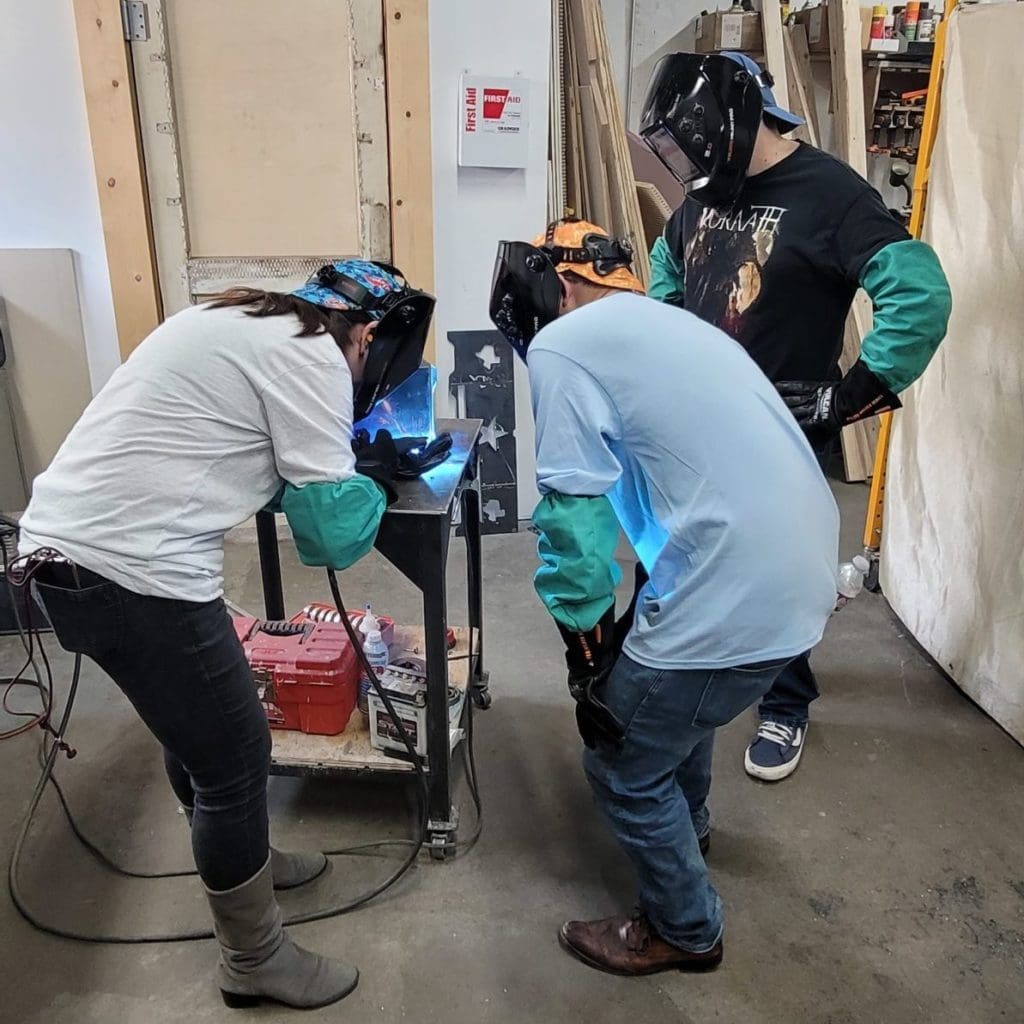

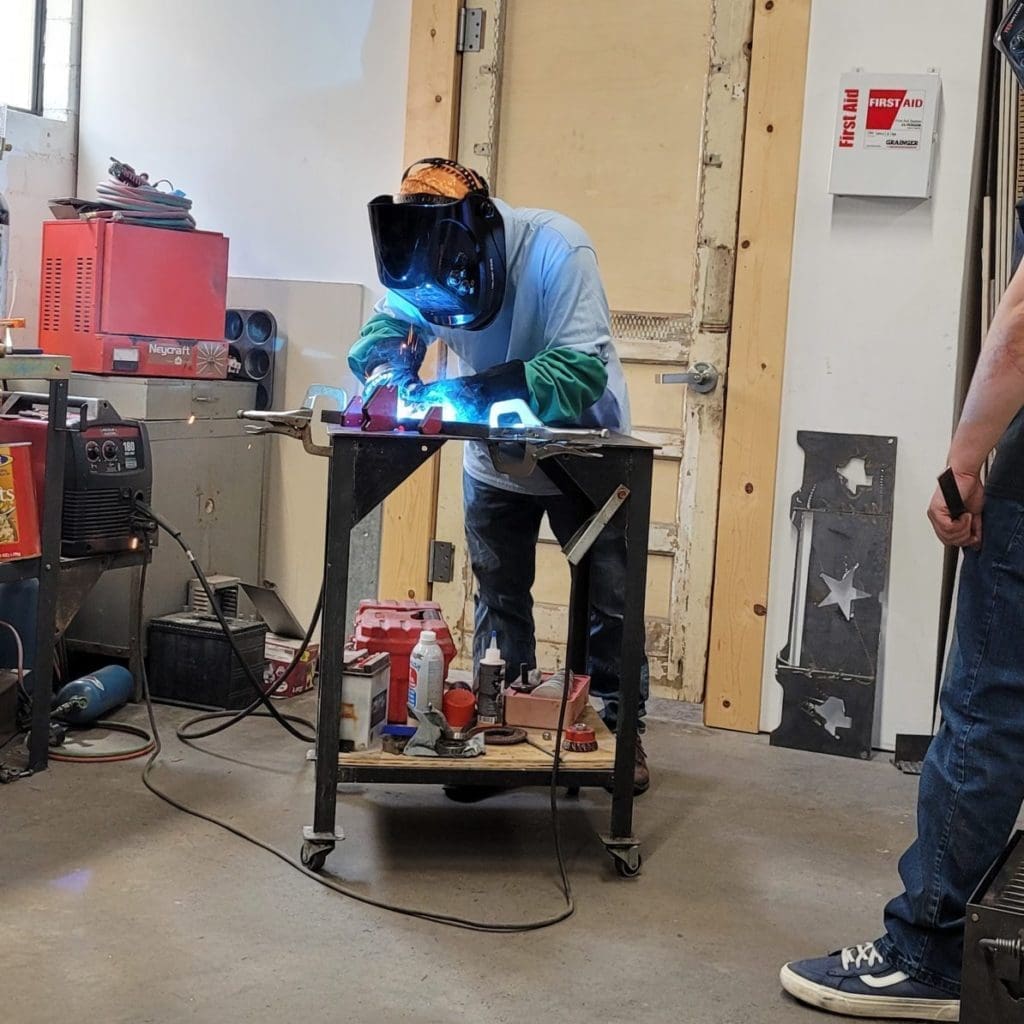
MIG Welding Unveiled
Welding, an age-old craft that fuses metals into incredible structures and works of art, continues to captivate the curious and the creative. Among various welding techniques, Metal Inert Gas (MIG) welding stands as a versatile, accessible, and impactful choice, perfect for both beginners and seasoned enthusiasts. In this comprehensive guide, we’ll delve deep into the world of MIG welding, its key distinctions from stick and TIG welding, and why it’s a preferred choice for many. Later, we’ll explore how Tarrant County Makerspace plays a pivotal role in introducing aspiring welders to this craft through its 1-day intensive class. We’ll even share the inspiring journey of three students, Bryan, Josh, and Jenny, who discovered a passion for welding in this very class.
MIG Welding Essentials:
MIG welding, also known as Gas Metal Arc Welding (GMAW), operates on a straightforward principle. It employs a consumable wire electrode and a shielding gas (typically a mix of argon and carbon dioxide) to create a robust and lasting bond between metals. The electrode continuously feeds into the welding gun, melting as it reaches the welding arc, thus forming a pool of molten metal that joins the base metals. As the weld cools, it solidifies, creating a strong, dependable fusion.
Differences from Stick and TIG Welding:
-
Stick Welding (SMAW): In stick welding, a coated electrode is used, and it requires a precise and consistent technique. It’s ideal for outdoor and rugged conditions but might not yield the cleanest welds.
-
Tungsten Inert Gas (TIG) Welding (GTAW): TIG welding employs a non-consumable tungsten electrode and is renowned for its precision and clean welds. However, it demands a high level of skill, making it more suitable for intricate projects.
Why Choose MIG Welding?
-
Simplicity and Speed: MIG welding is known for its user-friendliness. It’s easy to learn and execute, making it an excellent choice for beginners. Additionally, its high deposition rate allows for faster welding compared to TIG.
-
Clean Welds: MIG welding produces cleaner welds compared to stick welding, reducing the need for extensive post-weld cleanup.
-
Versatility: MIG welding can be used with various materials, including mild steel, stainless steel, and aluminum, making it a versatile choice.
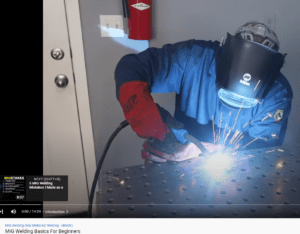
MIG (Metal Inert Gas)
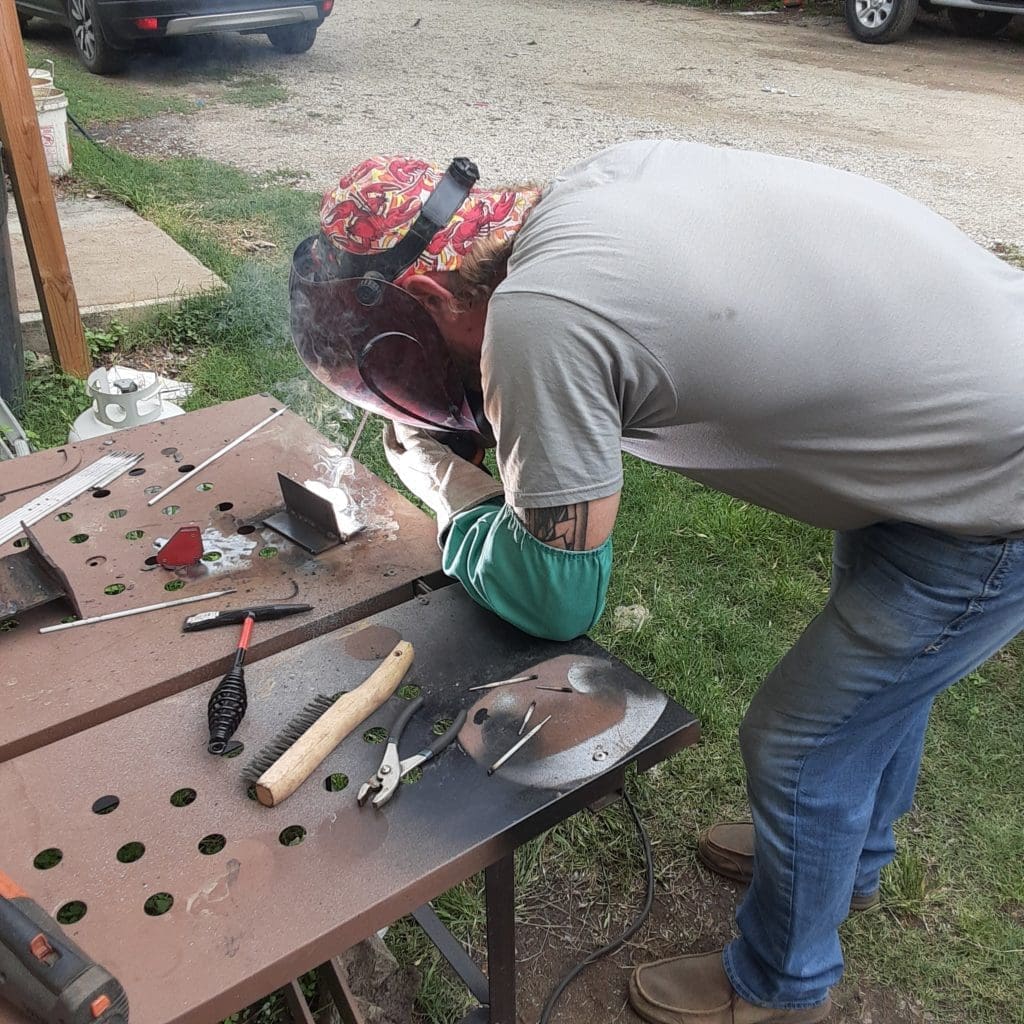
Stick (SMAW)
Tarrant County Makerspace's MIG Welding Class

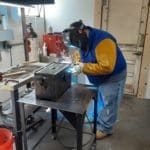

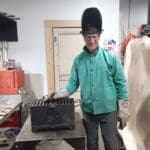
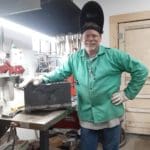

At Tarrant County Makerspace, we understand the allure of welding, and we’re passionate about sharing this craft with the community. Our 1-day, 6-hour MIG welding class is designed for beginners who want to explore the world of welding without the commitment of a lengthy course. Here’s what you can expect:
Personalized Introduction: The class begins with a personal touch. In the first 15 to 20 minutes, we delve into your interests and motivations for learning welding. We believe that understanding your goals helps tailor the experience to your needs.
Hands-On Practice: Next, you’ll dive into practical training, spending an hour practicing MIG welding on a practice coupon. You’ll start with flat beads and gradually progress to creating a T-joint and fillet weld. Our expert instructor, Aaron, with over 20 years of experience, will guide you every step of the way.
Craft Your Own Grill: The majority of the class is dedicated to crafting your very own charcoal grill. You’ll be actively involved in cleaning, prepping, fitting, tacking, and welding the components together. It’s a holistic approach that ensures you not only learn the theory but also gain practical experience.
Stick Welding Experience: If time permits, students also have the opportunity to explore stick welding, further expanding their welding skill set.
Student Stories
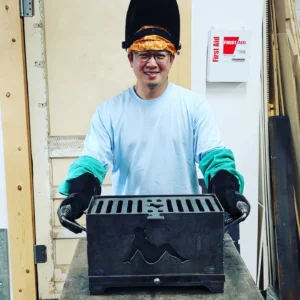
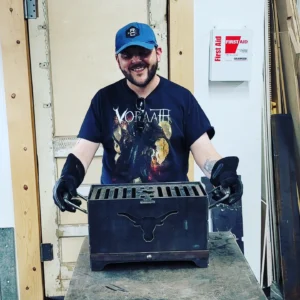

Let’s hear from three of our students who embarked on this welding journey with us:
Bryan’s Journey: Bryan, a complete novice, described the class as a “great welding introduction.” He started with zero knowledge about welding but felt comfortable learning MIG. He appreciated Aaron’s patience and found the class to be a lot of fun. Bryan’s eager to continue his welding journey and explore more classes at Tarrant County Makerspace.
Josh’s Experience: Josh, along with two friends, took the welding class and had a blast. He not only learned a lot but also left with a self-made grill that he described as “pretty nice looking.” He praised Aaron’s extensive knowledge and teaching skills, emphasizing that the 6-hour class flies by as you’re actively engaged the entire time. Josh highly recommends the class to anyone looking to learn something new while having fun.
Jenny’s Testimonial: Entering Tarrant County Makerspace’s welding class, Jenny was a hesitant novice, unfamiliar with power tools. Under Aaron’s guidance, she discovered patient mentoring that prioritized hands-on experience. Despite initial intimidation, detailed instruction and encouragement transformed Jenny’s uncertainty into accomplishment. The class empowered her, bridging her curiosity with practical learning. With newfound confidence, Jenny became a living testament to the impact of expert mentorship within a supportive space.
In conclusion, MIG welding opens doors to a world of creativity and craftsmanship. Tarrant County Makerspace’s MIG welding class serves as a gateway for beginners, offering an enriching experience that combines theory with hands-on practice. As showcased by Bryan, Josh, and Jenny, this class is not just about learning a skill; it’s about discovering a passion, fostering creativity, and joining a vibrant community of makers and welders. So, are you ready to spark your welding journey? Join us at Tarrant County Makerspace and ignite your creativity with MIG welding.
